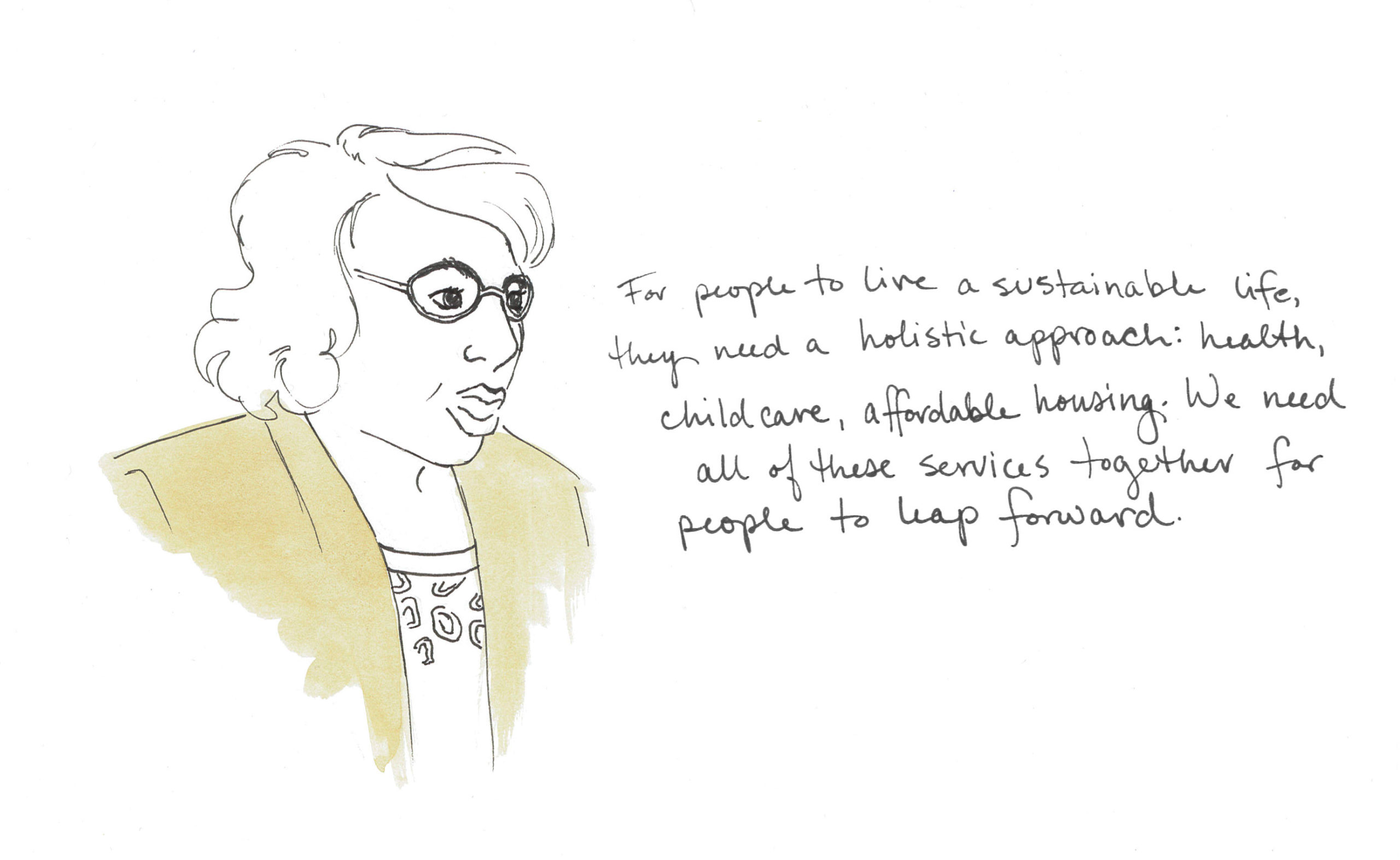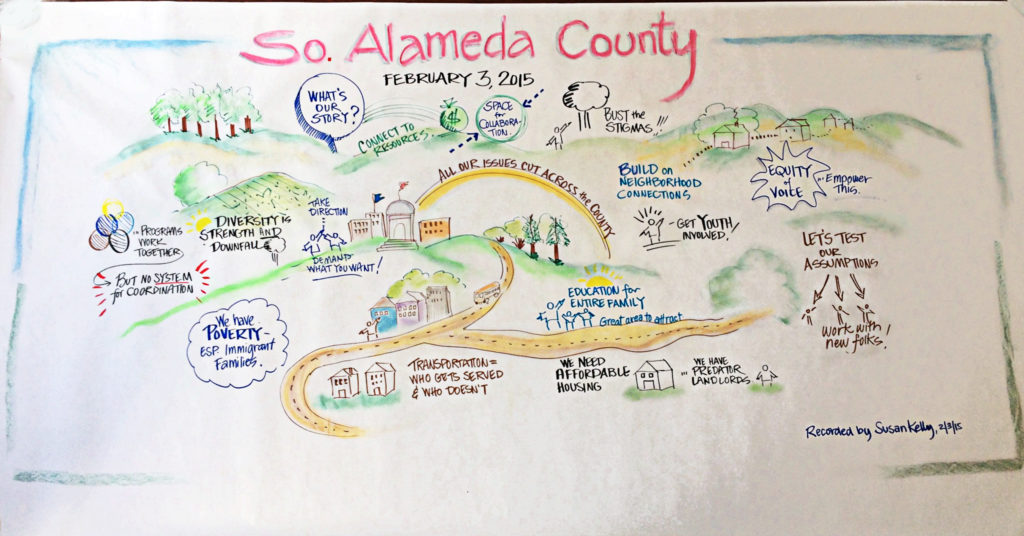Last week for VOICE: South Alameda County, we met with over 100 residents and service providers, public officials and advocates, congregational leaders and teachers from Newark, Union City, Livermore, San Leandro, Pleasanton, Fremont and Hayward. We want to share with you, and reflect on, the lived experiences and stories of the families that were shared with us as we tackle the hard truths of how far too many can’t make ends meet.
- Landscape and geography: We heard loud and clear that a major issue is that when people think Alameda County, they think Oakland and Berkeley. That association creates a significant challenge, not just in funding and policy implications. It misses out on the tremendous diversity, and the opportunities and challenges that come with working together across the many cities, and the county as a whole.
- Accessibility: We heard how public transit, services, and medical care are a challenge to access.
- Connection and Hubs: Many spoke of connection and collaboration across institutions, and even across cities, and the desire to enhance that even more. We heard a loud call and shared desire for centralized hubs and services based where people are, so people are better supported.
- Housing: Every table I sat at talked about housing, affordability, gentrification and displacement, and that while this part of the county is a little more affordable than others, many people still can’t make ends meet.
- Poverty and Homelessness: We heard many speak of poverty and homelessness as a “hidden” issue that goes under the radar and thus much harder to address and receive adequate support and services for families.
- Diversity: Many spoke of the strength and challenge of diversity—of being proud of how diverse the county is, and associating diversity with being an asset. On the other hand, we heard how racism and racial profiling continues to impact communities, and with the demographics shifting rapidly over the last five years, the infrastructure hasn’t caught up.
- Jobs: Connecting people to the prosperity in the region, and emerging opportunities with the tech industry, were central to the day.
- Education: We heard how many have the opportunity to access education that’s affordable for their kids, starting early and up through higher education with community colleges like Cal State East Bay and Chabot.
Collectively, these listening sessions are an important part of setting the course for our work at The San Francisco Foundation in the short and long term. For our work to be effective, it must be grounded in community, in the voices and lived experiences of the residents. And the stories that were shared illustrate the very heart of our purpose at this moment in our region, and in our nation.
We feel that it’s a dereliction of duty not to address issues of equity in this region. We’ll be continuing these conversations and we feel the sense of urgency around taking action on things we are hearing. The very people who are going to be the entrepreneurs, workers, policy makers of the future are the very people are who are being left behind today. Together, we have the opportunity to change the future for our region, and be a model for the nation.
In addition to the stories we’re hearing as we meet throughout the region, very soon we will launch an opportunity for you to share your stories with us online as well. This is not the end of us being able to engage and share what we are learning with the broader Bay Area. This is only the beginning, and we look forward to taking action together.
Check out more from VOICE: South Alameda County at thesanfranciscofoundation.tumblr.com and #ShareYourVoice with us on Facebook and Twitter.



